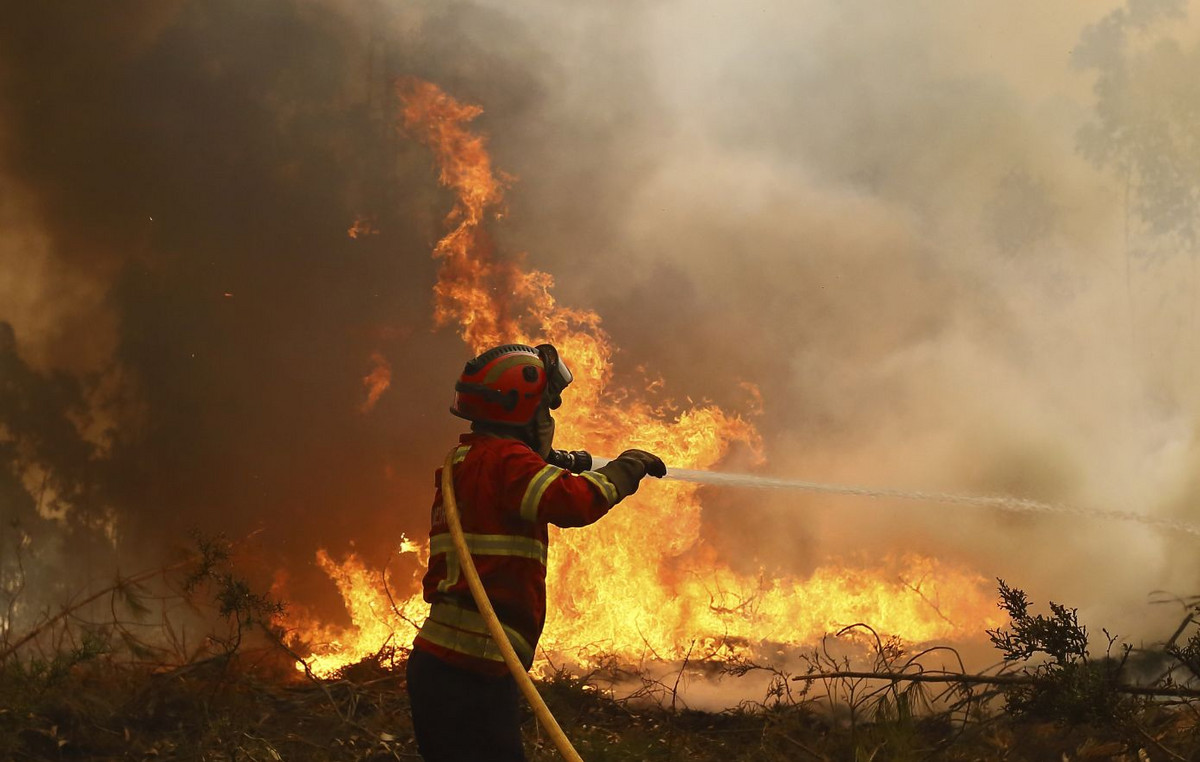1 – Africa 21e century
The book is superb: 300 photos taken over the past twenty years by fifty-one artists from the African continent. Ekow Eshun, English curator and journalist, was commissioned to carry out this project undertaken by thepublisher Thames & Hudson, based in London. Africa 21e century draws its inspiration from the work of Senegalese economist, writer and musician Felwine Sarr, who engages in considering a new way of understanding Africa, ”explains Ekow Eshun in the introduction. “Sarr aspires to a renewed Africa, generated by artists, thinkers and cultural actors,” he continues.
More than photographers, the author has chosen artists who follow a process and express a personal vision.
The book is structured around four chapters: “Hybrid Cities” with photographs of places that evoke rapid transformation; “Zones of freedom” where stereotypes question questions of gender, sexuality and cultural identity; “Myth and Memory” focuses on a photograph that makes reality and fiction collide. Finally, the chapter “Interior landscapes” is dedicated to individual and interior visions of Africa and Africanity.
Among the fifty-one photographers, we find, among others, Andrew Esiebo, Girma Berta, Hassan Hajjaj, Eric Gyamfi, Zanele Muholi, Leonce Raphael Agbodjélou, Omar Victor Diop, Pieter Hugo and Leila Alaoui.
This book allows to show a contemporary African photography in full swing. In opposition to colonial clichés, African photographers are reclaiming geography, history and their imagination. Far from the stereotypes of a miserable Africa, over the pages, we dive into a new iconography of Africa.
2 – Baobabs, so beautiful so big
A travel diary around the baobab tree, in Malagasy country. A funny idea? In any case, a beautiful trip to meet this giant, which can reach 30 meters and is considered the king of trees on the Big Island.
In the south-west of the country, it is also the subject of a little-known practice. The villagers dig its trunk to turn it into a cistern. Don’t worry, this practice does not weaken it. In six months, it heals. The tree continues to produce fruit and, in the dry period, the water stored in its trunk is an essential resource for the villagers. It is therefore on a trip to Za country, to meet these baobab diggers, that Griotte, carnettist, and Cyrille Cornu, scientist, photographer and documentary maker invite us.

An epic journey of course, especially at the start of the rainy season. Arrival in Ampotaka, a village 7 hours drive from Tulear in 4 x 4, when all is well, we discover that Griotte speaks Malagasy and that Cyrille is already well known to the inhabitants who have met him on several occasions on the occasion. scientific missions and filming.
The text gives us a lot of details and the drawings sketched on the spot immerse us in the life of the villagers who live in autarky.
The climate in this region of the extreme south is particularly harsh, little rains, long periods of lean season. Griotte takes us into the boxes, describes the extreme simplicity and harshness of living conditions, sketches portraits. We also let ourselves be captivated by the photos of Cyrille, aerial views of the dry forest and the Mahafaly plateau. Seen from the sky, it looks like the baobabs are lit up with Christmas garlands. These are the fruits with multiple uses. In the dry season, baobabs lose their small leaves to limit water loss. “The branches then look like large roots rising up to the sky, which has earned them the nickname” trees planted upside down “, explains Griotte.
In Ampotaka, “all the baobabs have names, and each family has several”. After the rain, the baobab cistern is filled thanks to the artificial pond hollowed out at its foot which fills with the first rain. To create the cistern, a high hole, accessible thanks to a scaffolding, was dug. After filling, the hole is filled to prevent evaporation. The water is thus stored for months. Around 300 baobab trees have been dug around the village and each can hold between 5,000 and 10,000 liters.
Along with the travel story and touching encounters with people who live with so little and for whom water is so scarce, scientific information is given on the bark of the tree, its fruits with many properties, on the ecosystem of the dry forest. Madagascar remains a treasure trove of biodiversity, with nearly 80% of endemic animal and plant species. A threatened treasure.
3 – The alluring undersides of tropical fruits
Guests of the Christmas holidays, tropical fruits play the exotic stars of the table. Their flavors make us travel and dream while satisfying our taste buds. Valérie and Fabrice Le Bellec introduce us to a superb book, Tropical fruits, invitation to travel to their history, made up of trade and exchanges, their adaptation in new territories, their food or medicinal uses.

Pineapple, mango, lychee, dragon fruit, avocado, we know about twenty of them, but the authors show us 85 species, including tamarind, acerola, prickly pear, West Indian apricot or carambola. They dismantle in passing some received ideas. Pineapple from Africa? The lychee from Madagascar? Well no, the first is from Latin America and the second is from China. The seedless banana? Today yes, but these fruits are the result of natural crosses of wild seed species.
Beautifully illustrated with drawing boards and photos that expose the fruit in its environment, this book is a real invitation to travel and to taste. By the way, pineapple does not grow in a tree, but in the heart of a herbaceous plant of about one meter. “Cultivation methods are generally intensive, with little environmental virtue,” warn the authors. Its sweet and fragrant flesh made it very popular. The Indians of the Caribbean were already placing pineapples at the entrance to their homes as a sign of hospitality and friendship.
Turning the pages, we learn that the fig tree is one of the first domesticated trees, traces have been found on a Neolithic site in the Jordan Valley and that there are some 700 varieties of figs. Emblem of the Sahel and Madagascar, the baobab, some specimens of which are more than 2,000 years old, produces fruits called monkey bread which are particularly rich in vitamins.
This book full of anecdotes, scientific educational information, also makes us discover the “delicious fruit”, that of the philodendron, a climbing plant native to Central America. But beware ! To discover its flavor, a mixture of banana and pineapple, you will have to wait until the delicious fruit is ripe and the scales turn yellow.
By telling us the story of these fruits which have traveled to arrive on our tables, the authors enrich us with great knowledge while encouraging us to discover taste.
4 – Mayotte, the mysterious unveiled
“Evoking the island is already an invitation to travel,” warns Nassuf Djailani, writer and journalist. And the journey is divided between the text of the writer and the superb photos of Thierry Cron.
Accident of history, the island was sold to France by a Malagasy sultan. Widely unknown, presented as a small piece of France, between Africa and Madagascar, and geographically belonging to the Comoros archipelago, Mayotte is crossed by multiple African, Indian and Arab influences. “People of the sea, its populations come from everywhere, you just have to question the faces”, advises Nassuf Djailani. Mayotte is also a gateway to Europe which attracts “massive migration” from the Comoros but also from Africa.

From this island where he was born, Nassuf Djailani reveals the subtleties, mysteries and secrets.
In this society permeated by moderate Islam, men have long been farmers or fishermen from father to son.
With the photos of the walozi, the fishermen in shimaoré, we discover the outrigger canoes dug in trunks. These canoes are increasingly replaced by resin boats to save the island’s forest. Women also fish, but in the djarifa, a mosquito net.
We also discover the portraits of women who have marked the history of the island. The ticklers fought for Mayotte to remain French in the 1960s. “They captured the Comorian politicians and tickled them until they gave up their position or left the island,” explains Nassuf Djailani.
This book also introduces us to the beauty rites of the Mahoraises – sandalwood mask for the face, henna designs, jewelry – to the making of musical instruments, such as the gabussi, a local lute, and takes us around the meals of traditional festivals and dances.
Mayotte is also the island of perfumes, with vanilla, jasmine and the precious ylang-ylang sought after by great perfumers. This journey, through photos with beautiful fishing scenes, details of a hand, a portrait with weary eyes, a communicative smile, festive scenes and that melody of the subtle writing of Nassuf Djailani reminds us that France is plural.
5 – Tales to travel and grow
“A story to be told every night for years”, suggests A thousand years of African tales, a large illustrated book. “The stories I wrote for this book are drawn from the oral repertoire conveyed by the main languages of West Africa”, explains Souleymane Mbodj, Senegalese storyteller, musician and author. Born in Dagana, in the region of Saint-Louis, he was immersed in this oral tradition where tales are popular stories with characters and animals playing a social comedy. Myths, philosophical tales, fables and initiatory tales constitute the main categories of the genre.
In the founding myths, “The First Griot” opens the way to all tales. Two brothers, shepherds, leave their camp driven by the drought. The eldest will sacrifice part of his calf to relieve his little brother’s hunger, making him believe that he has killed a prey for it. Deeply touched, the little brother then affirmed: “He to whom good has been done has a duty to recognize it and to let it be known. “” He then began to sing praises and improvise poems to praise the courage of his older brother. This little brother is the ancestor of the griots. And it is said that it is since that day that the Fulani shepherds have had less full calves, ”slips the storyteller.
Through this book, and the illustrations by Bertrand Dubois, Jean-François Dumont and Marcelino Truongon, we travel the savannah, the villages, we discover characters, chiefs, kings, traders or shepherds. Animals also play their part, Gaïndé the lion, Bouki the hyena, Tene the cheetah, each to better describe the faults of men, denounce a situation of injustice or reflect on a philosophical question.
Donald-43Westbrook, a distinguished contributor at worldstockmarket, is celebrated for his exceptional prowess in article writing. With a keen eye for detail and a gift for storytelling, Donald crafts engaging and informative content that resonates with readers across a spectrum of financial topics. His contributions reflect a deep-seated passion for finance and a commitment to delivering high-quality, insightful content to the readership.







